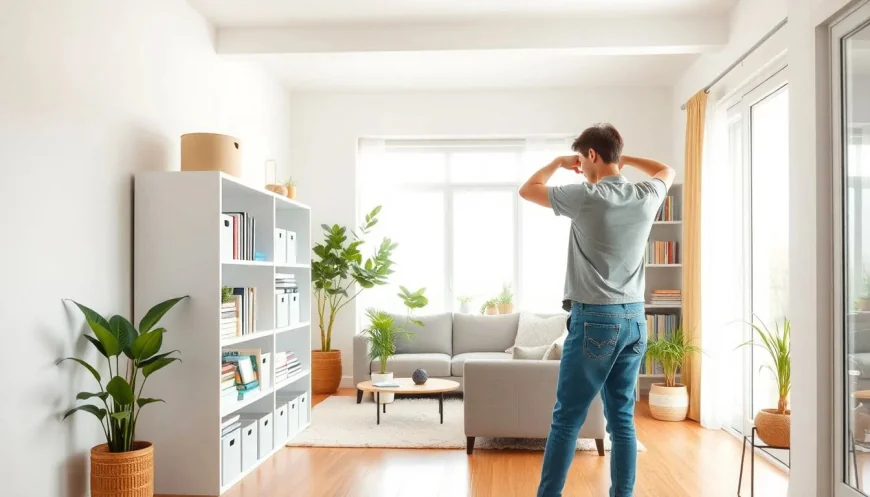Ultimate Guide to Organizing Your Home for a Clutter-Free Living Space
A tidy home isn’t just nice to look at — it changes your life. When your space is organized, stress drops, and productivity soars. Ever notice how much easier it is to focus when clutter isn't in your way? Studies show that a clutter-free environment can lower anxiety and boost overall happiness. Over time, organized living means more space to breathe, better mental clarity, and safer surroundings. It’s not just about looks; it’s about creating a haven that works for you.

Understanding the Importance of Home Organization
The Psychological Benefits of a Clutter-Free Home
Clutter can weigh heavily on your mind. When mess piles up, so does mental fatigue, making it hard to concentrate. Clear spaces help reduce anxiety and give you a sense of calm. They also make decision-making smoother since you’re not constantly faced with chaos.
The Practical Benefits of An Organized Space
An ordered home saves time every day. You won’t waste minutes searching for keys or that missing shirt. Plus, when things are stored properly, your belongings last longer. Proper storage helps prevent damage and keeps everything in good shape longer.
Common Obstacles to Home Organization
Why is it so hard to keep things tidy? Sometimes, it’s procrastination or emotional ties to certain items. Other times, it’s a lack of good systems or storage options. Recognizing these hurdles is the first step to overcoming them.
Assessing Your Space and Setting Realistic Goals
Conducting a Home Evaluation
Start by looking at your home with fresh eyes. Make a list of the worst clutter spots or snap pictures of problem areas. Focus on spaces that impact your daily routines most, like the kitchen or bedroom.
Setting SMART Goals for Organization
Don’t just say "organize the house." Instead, set goals that are clear and doable — smart goals. For example:
- "Clear out the closet by next weekend."
- "Organize the kitchen pantry within two weeks."
- "Declutter the garage by the end of the month."
Make sure goals are specific, measurable, achievable, relevant, and time-bound.
Creating an Action Plan
Break your goals into small steps. Assign deadlines and check-up dates. If your closet needs a quick clean, plan it for Saturday morning. Smaller tasks feel less overwhelming and keep you motivated.
Developing Effective Decluttering Strategies
The Four-Box Method and Other Decluttering Techniques
Using four boxes can make sorting easier: discard, donate, keep, and sell. Be honest — if you haven’t used something in a year, it probably belongs in discard or donate. Sorting decisively speeds up the process.
Incorporating the KonMari Method
Marie Kondo’s method asks: does this item spark joy? If not, thank it for its service and let it go. This approach helps you focus on feelings rather than logic alone, making decluttering easier.
Handling Sentimental Items and Emotional Baggage
Emotions run high when dealing with keepsakes. Tackle this by setting limits, like only keeping a certain number of photos or mementos. Professional organizers suggest asking yourself, “Will this truly add value to my life today?”
Implementing Storage Solutions and Organizational Systems
Customizing Storage for Different Rooms
Each space needs tailored solutions:
- Kitchen: Use clear jars for pantry staples; install pull-out shelves for easy access.
- Closet: Add shelves, hanging racks, or shoe organizers to save space.
- Living areas: Use smart furniture like storage ottomans or coffee tables with compartments.
Choosing the Right Containers and Labels
Clear containers help you see what's inside instantly. Stackable boxes save space, and drawer dividers keep small items in order. Use labels on bins and shelves to make everything easy to find.
Optimizing Space with Multi-Functional Furniture
Look for furniture that hides storage, such as beds with drawers or benches with compartments. Vertical space is often underused — install wall shelves or hooks to free up floors and counter space.
Maintaining Your Organized Home
Daily Habits for Sustained Clarity
Spend just 10 minutes each day tidying up. Put things back after using them and tidy up clutter hotspots. Small habits prevent mess from building up again.
Weekly and Monthly Upkeep
Set aside time weekly to review cluttered spots. Seasonal cleaning sessions are great for clearing out clothes or items you no longer need. Keeping on top of general maintenance makes a big difference.
Enlisting Household Members and Creating a Culture of Organization
Make organization a team effort. Assign chores and responsibilities to each person. Celebrate progress, and keep everyone committed to a clutter-free home.
Additional Resources and Expert Insights
Books like Marie Kondo’s "The Life-Changing Magic of Tidying Up" or blogs by organization pros can offer inspiration. Apps that help track decluttering progress are worth trying too. Experts like Peter Walsh remind us: "Organization is a journey, not a one-time event."
Conclusion: Achieving and Sustaining a Clutter-Free Home
From assessing to decluttering to organizing, every step brings you closer to a peaceful home. Start small—pick one room or a single drawer. Implement habits that stick, and you'll keep clutter at bay. Your space can be a refuge of calm, clarity, and safety. Take action today, and turn your house into a home you love to live in.



 VARSHITHA
VARSHITHA